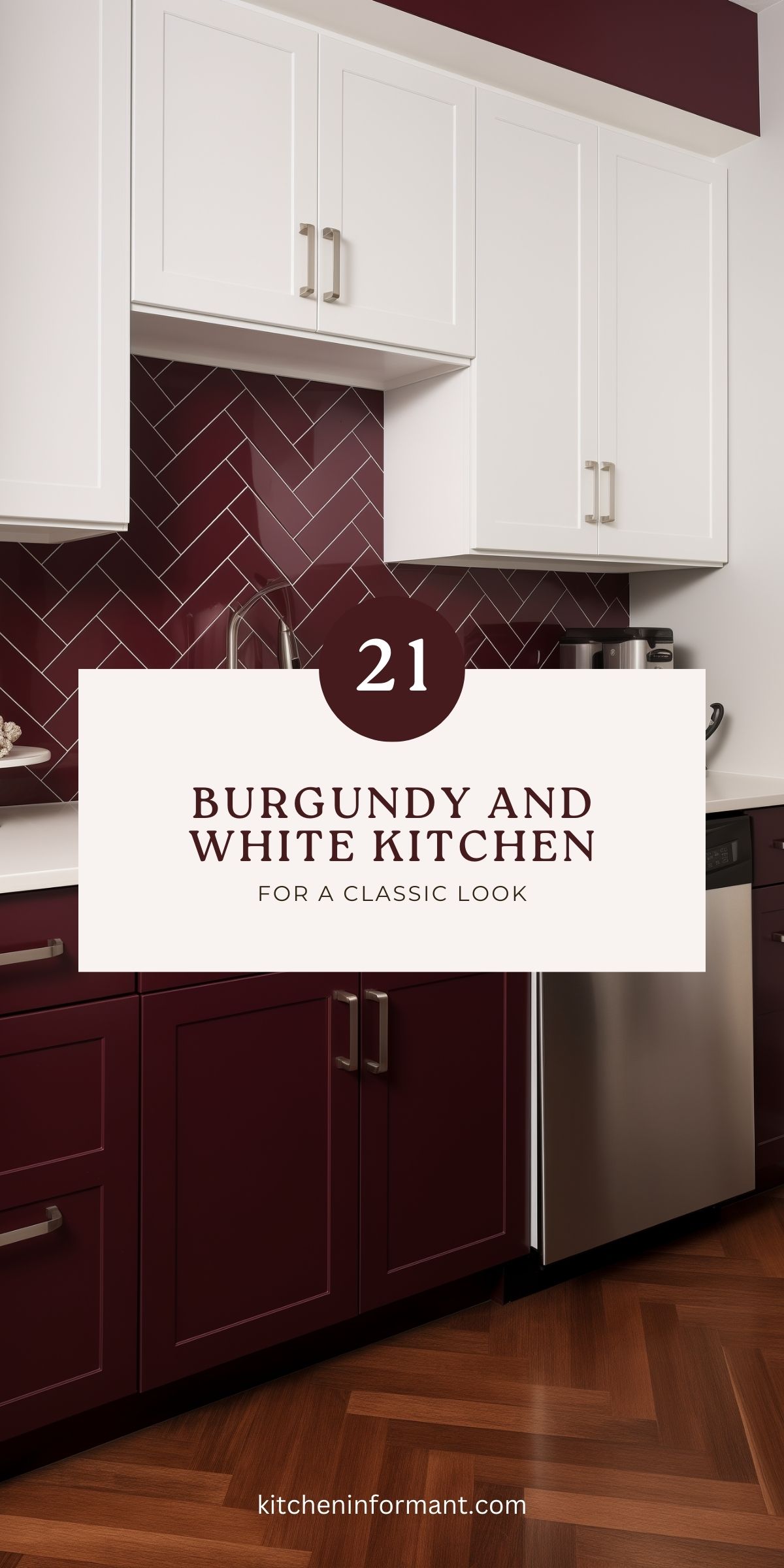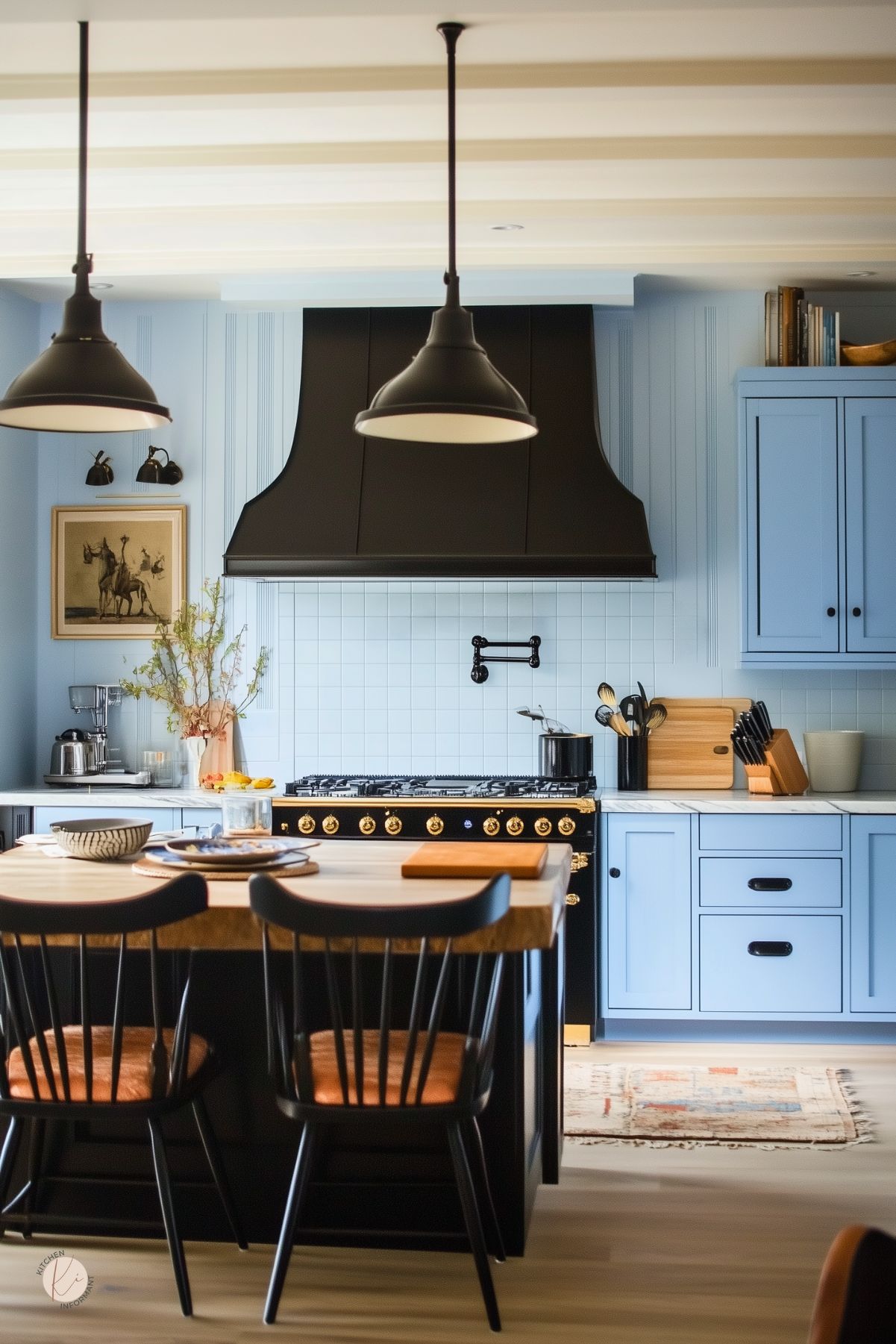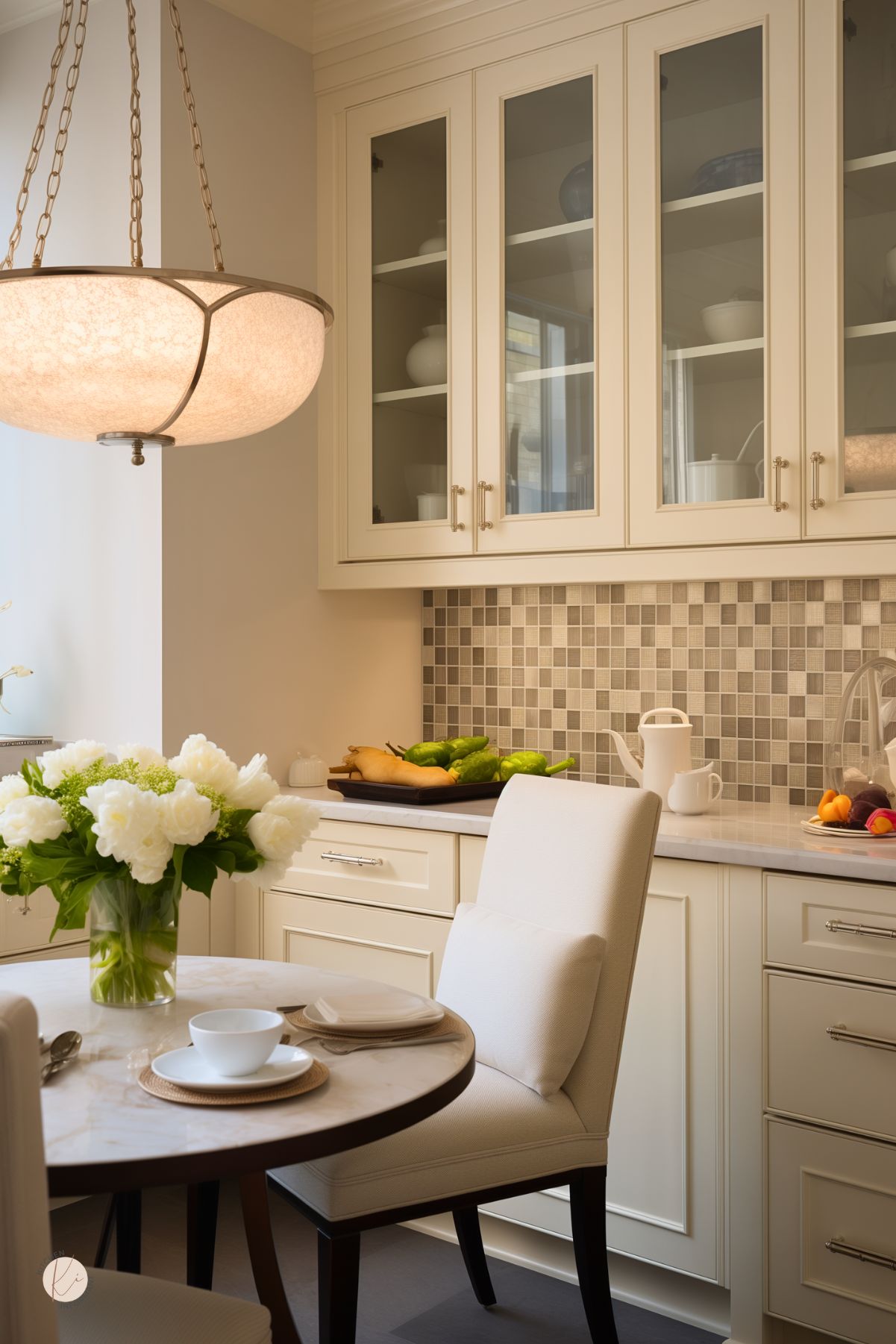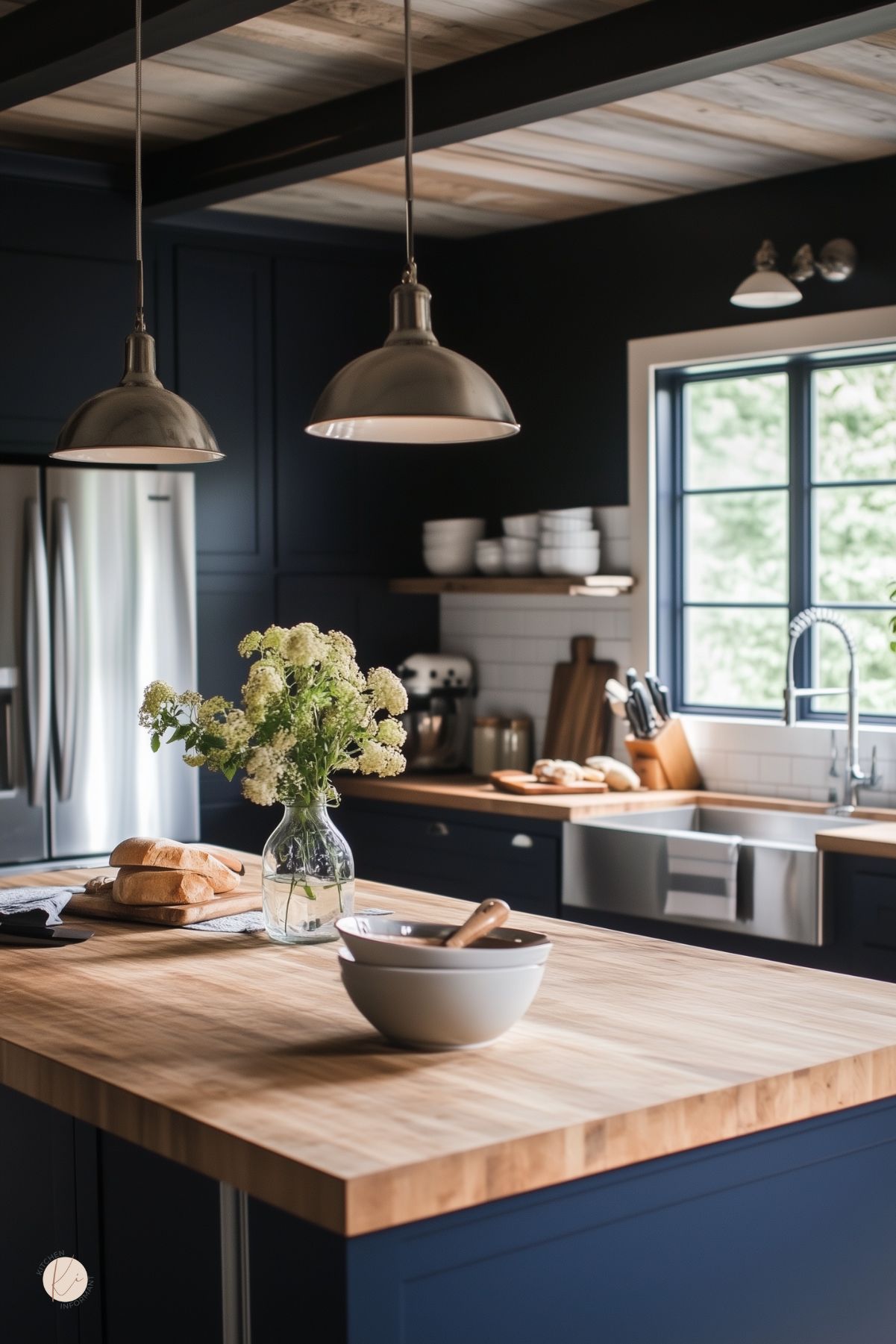For anyone looking to create a timeless kitchen design, the combination of burgundy and white offers a classic yet modern appeal.
This color pairing not only adds warmth and depth to the space, but it also allows for versatile styles from traditional to contemporary.
Burgundy cabinets can make a stunning focal point, especially when balanced with bright white walls and countertops.
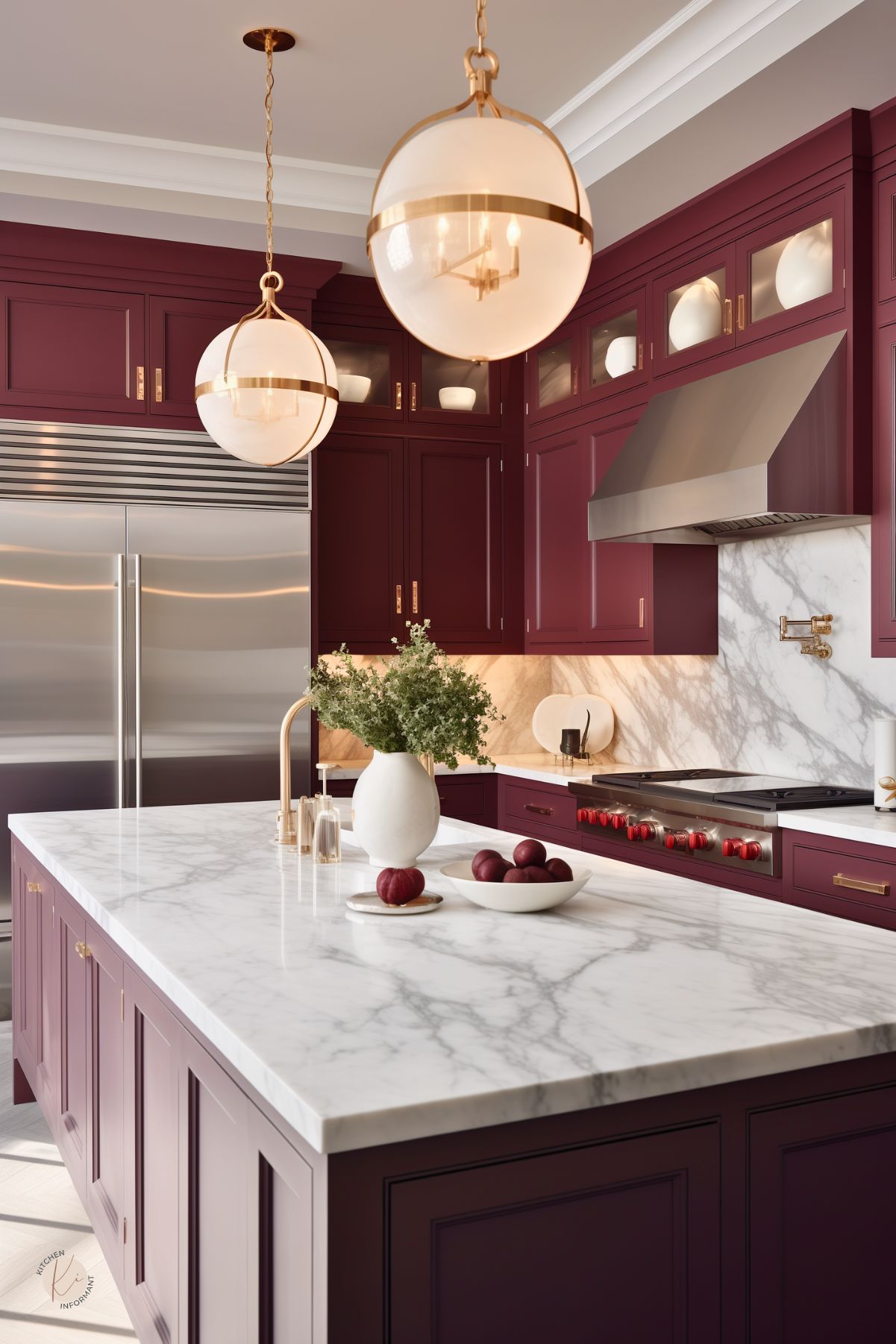
Incorporating this rich hue can elevate any kitchen, making it feel both inviting and elegant.
From the selection of cabinetry to the choice of fixtures, there are numerous ways to enhance this color scheme. Burgundy accents can be seamlessly integrated, introducing a cozy vibe while maintaining a sophisticated look.
Whether through bold cabinetry or subtle decor touches, the burgundy and white combination creates a lovely atmosphere suitable for family gatherings or casual dining.
This blog post will explore practical tips and inspiring ideas to transform any kitchen into a stylish haven.
The Timeless Appeal of Burgundy and White Kitchens
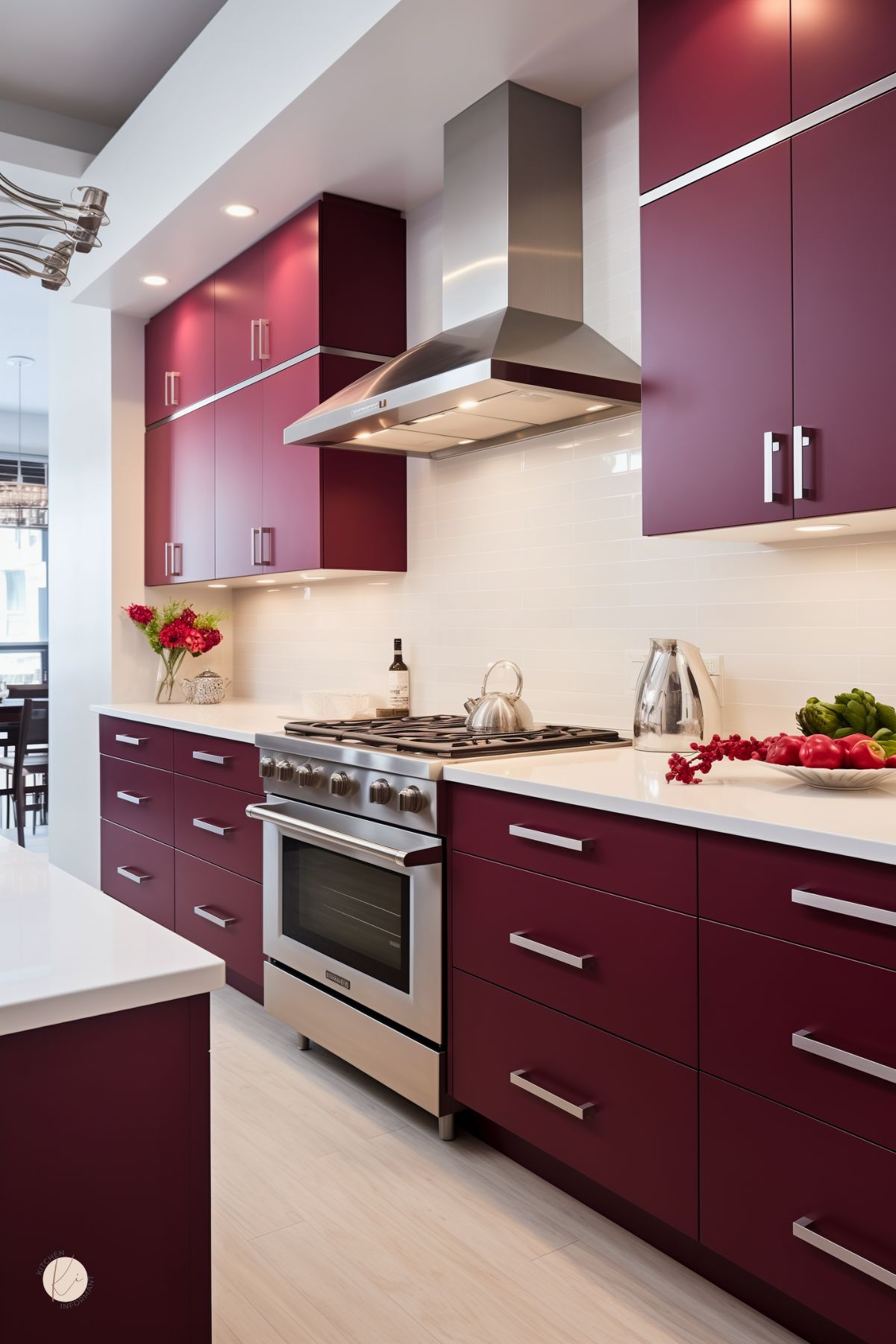
Burgundy and white kitchens offer a blend of elegance and warmth. The deep, rich tones of burgundy paired with the freshness of white create a classic aesthetic that is both inviting and sophisticated.
This section explores the color dynamics and historical context behind these hues in kitchen design.
Color Theory in Kitchen Design
Burgundy is a strong, vibrant color that evokes feelings of warmth and comfort. It can make a space feel cozy while adding a touch of luxury. When paired with white, it creates a striking contrast that helps to brighten the overall look.
Using a predominantly white palette allows the burgundy elements to stand out, drawing attention to cabinets, appliances, or accessories. A mix of both colors can be used effectively in features like backsplashes, countertops, or furniture.
Here are some ideas for effective color combinations:
- Burgundy cabinets with white marble countertops.
- White walls with burgundy accents in decor and fixtures.
- Open shelving that displays white dishware against a burgundy backdrop.
Historical Context of Burgundy in Interiors
Burgundy has a rich history in interior design, dating back to the Renaissance period. It is often associated with royal and luxurious spaces.
The use of burgundy can evoke feelings of elegance and comfort, making it ideal for homes.
Throughout the years, burgundy has remained a popular choice in kitchens, thanks to its versatility. It fits well in both traditional and modern designs, adapting to various styles.
In classic settings, burgundy pairs beautifully with gold and cream accents. In contemporary designs, it mixes well with sleek materials like stainless steel and glass.
This adaptability adds to the timeless appeal, allowing homeowners to create unique spaces that reflect their personal style.
Designing Your Classic Burgundy and White Kitchen

Creating a timeless kitchen with burgundy and white involves selecting the right shades and balancing the colors effectively.
The combination can provide an inviting and elegant space when done thoughtfully.
Choosing Your Shade of Burgundy
When selecting a shade of burgundy, it’s essential to consider how it will interact with light in the kitchen.
Burgundy can vary from deep, rich tones to lighter, more muted shades. Darker shades may create a cozy feel, while lighter hues can add brightness.
It’s also vital to think about the overall style of the kitchen. For a modern look, a brighter burgundy may pair well, while traditional designs often benefit from deeper tones. Each shade brings a unique ambiance.
Sampling a few shades on the wall is a great way to see how they look in different lighting throughout the day. This approach can help in finding the perfect fit that complements the kitchen’s features.
Selecting the Right White
Choosing the right shade of white is just as crucial. There are many variants of white, including warm and cool undertones.
A warm white can create a soft and inviting atmosphere, which balances beautifully with burgundy.
Consider the following when selecting a white:
- Undertone Matching: Ensure the undertones of the white align with the burgundy shade.
- Gloss Level: A satin or semi-gloss finish reflects more light, making the space feel larger and more open.
- Cleanliness and Maintenance: Matte finishes may show dirt and stains more than glossier options.
Testing a few whites against the burgundy can highlight which combination feels right for the space.
Balancing the Color Scheme
To achieve harmony in a burgundy and white kitchen, balance is key. Both colors should enhance each other without overwhelming the space.
Using burgundy accents, like cabinets or a feature wall, can draw attention without making the room feel dark. White can be used prominently for walls, countertops, and trim to keep the area feeling bright.
Tips for balance:
- Two-Tone Cabinets: Consider combining white upper cabinets with burgundy lower cabinets for visual interest.
- Accessorizing: Incorporate white items, such as dishware and fabrics, to tie the room together.
- Neutral Elements: Use neutral colors like gray or beige for backsplashes and flooring to create depth and maintain focus on the main colors.
Key Components for a Burgundy and White Kitchen
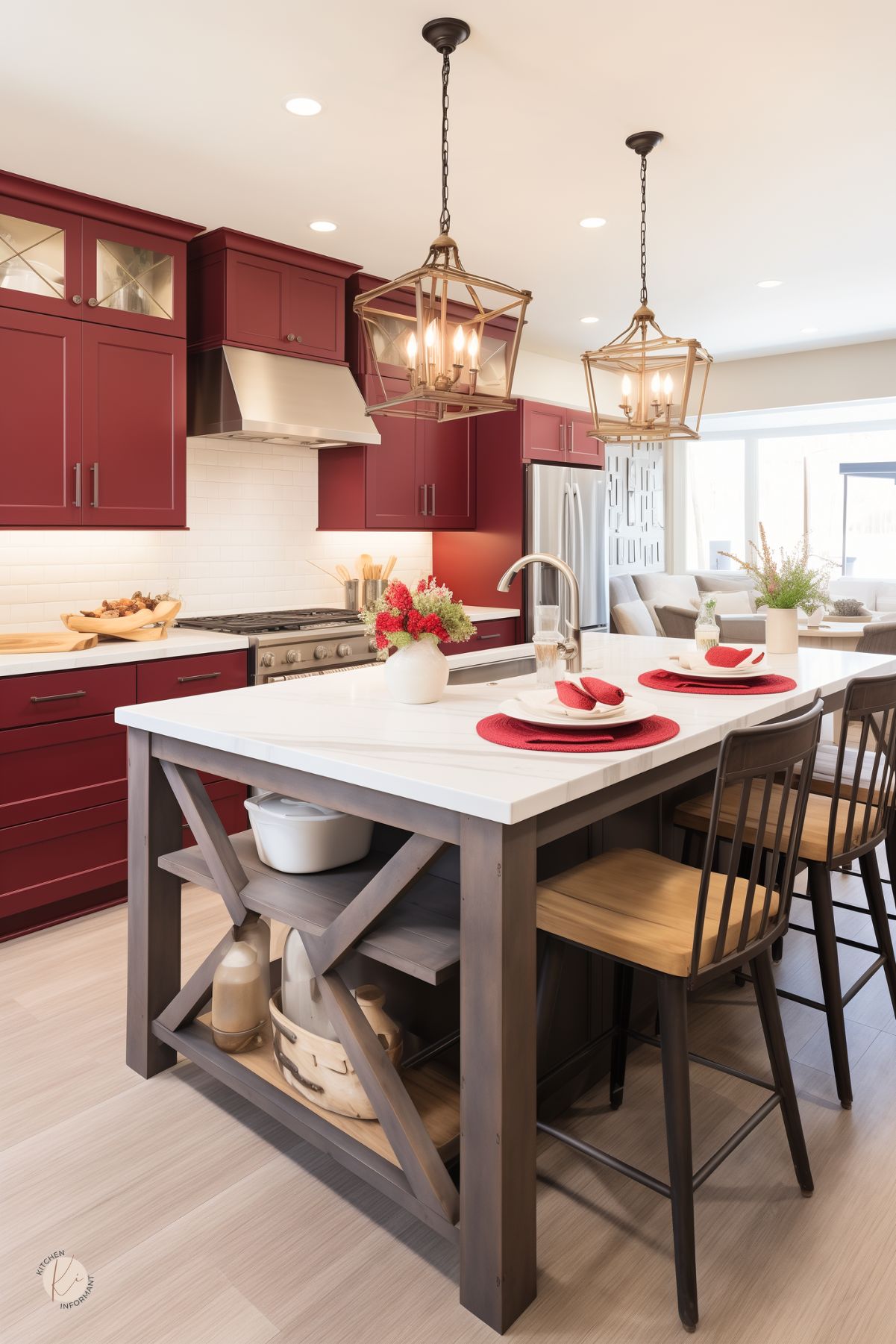
In a burgundy and white kitchen, key design elements work together to create a stunning and cohesive look.
Important aspects include cabinetry and hardware, countertops and backsplashes, and flooring and wall treatments. Each plays a vital role in achieving the intended aesthetic.
Cabinetry and Hardware
Cabinetry is often the centerpiece of any kitchen. For a burgundy and white kitchen, choosing deep burgundy cabinets can add a rich, luxurious touch.
These cabinets can be complemented by white accents, such as trim or open shelving, to brighten the space.
Hardware choices also make a difference. Brushed brass or chrome handles provide a sleek contrast and enhance the elegance of the burgundy tone.
Mixing materials, like glass knobs with the rich cabinetry, can add a stylish dimension.
Countertops and Backsplashes
Countertops and backsplashes should enhance the overall color scheme.
White countertops, especially in materials like quartz or marble, can provide a crisp and clean look.
For backsplashes, consider white subway tiles for a classic effect. They are easy to clean and work well with various styles.
To add visual interest, a patterned tile in burgundy can be used as a feature area. This combination creates a beautiful balance of color and texture.
Flooring and Wall Treatment
The flooring in a burgundy and white kitchen should unite the color scheme and set the room’s tone.
Light hardwood or whitewashed wood flooring can keep the space feeling airy, despite darker cabinetry.
Wall treatments also play a key role. Walls painted in a soft white or light gray can provide a neutral background that allows burgundy accents to shine.
Alternatively, a feature wall in burgundy can create depth and draw attention to specific areas, like a charming dining nook or built-in shelving.
Incorporating Materials and Textures
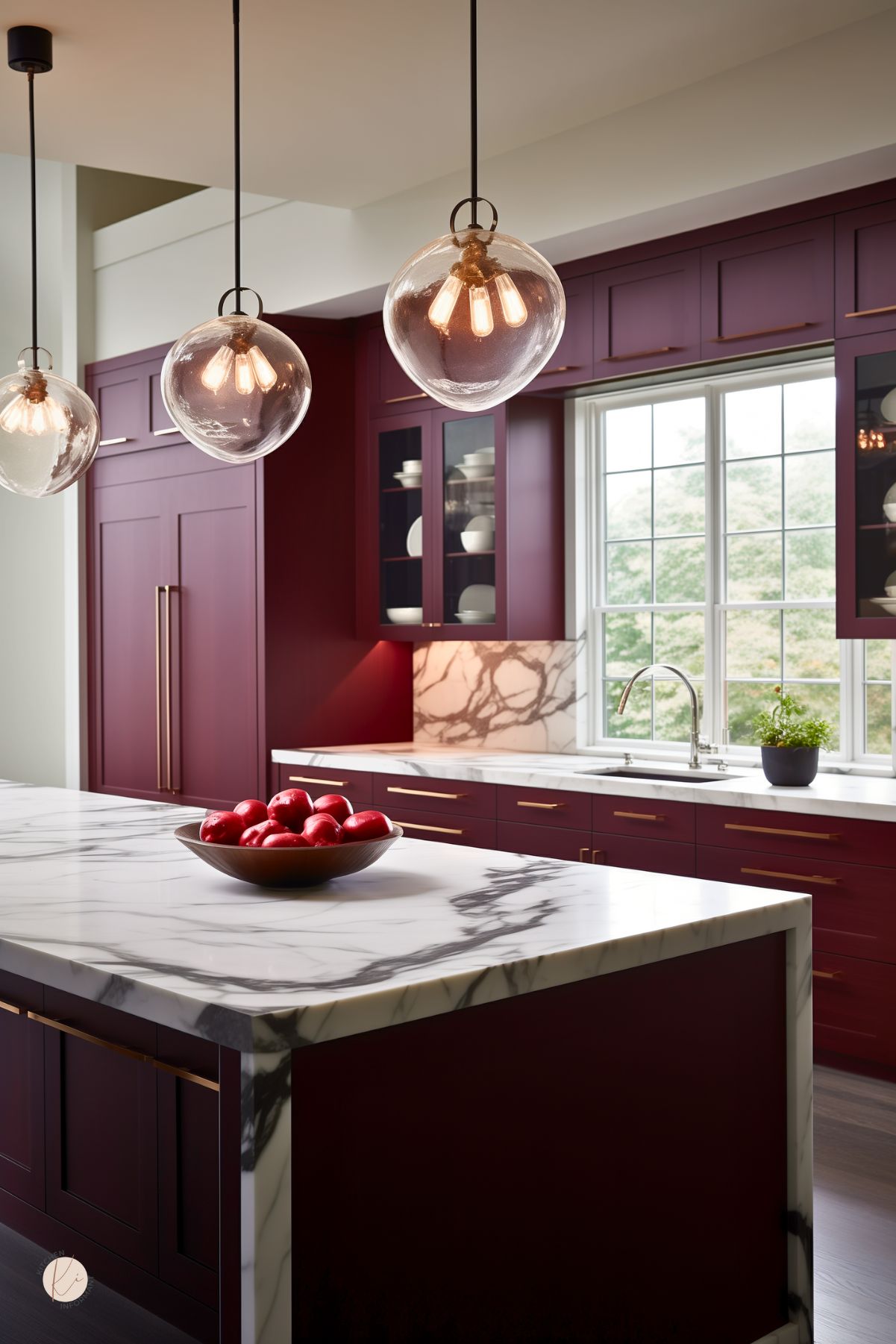
Incorporating various materials and textures can elevate the classic look of a burgundy and white kitchen.
This creates a balanced and inviting space. Focusing on elements like natural stone, wood, metals, and glass will enhance the overall aesthetic.
Natural Stone and Woods
Natural stone, like marble or granite, pairs beautifully with burgundy. A white marble countertop with burgundy veins can create a striking focal point. This combination adds both elegance and durability.
Choosing wood for cabinets or accents can bring warmth to the kitchen. Rich, warm woods, such as cherry or walnut, complement burgundy nicely.
These materials can break up the color scheme, adding depth while maintaining a classic feel.
Additionally, using wooden elements in open shelving or a wooden table can enhance the homey vibe. Opting for reclaimed wood can introduce unique textures and stories into the design.
This mix of natural stone and wood brings an earthy touch that balances the boldness of burgundy.
Metals and Glass Accents
Metals and glass can add a modern twist to a classic kitchen.
Choosing brushed brass or polished nickel fixtures creates an inviting contrast to burgundy and white. These elements can be used in cabinet hardware, faucets, or light fixtures.
Glass accents can soften the look and provide visual lightness.
Consider glass cabinet doors showcasing elegant dishware or decorative items. Clear or frosted glass can add an airy feel to the kitchen while complementing the rich tones.
Incorporating mixed metals can create a layered look. This adds sophistication and personality. Mixing warm metals with cooler tones can also create a balanced atmosphere.
Lighting and Ambiance

Creating the right lighting in a burgundy and white kitchen can enhance the room’s atmosphere.
Proper lighting not only makes the space functional but also highlights the beauty of the color scheme.
Overhead Lighting
Overhead lighting is essential in a kitchen. It provides general illumination and sets the mood.
For a burgundy and white kitchen, consider pendant lights or chandeliers that feature white shades or metallic finishes.
Choosing the Fixture:
- Material: Look for fixtures in gold or polished nickel to complement burgundy.
- Style: Industrial or vintage styles can add character.
A strategically placed ceiling fixture ensures every corner is well-lit. This makes tasks easier while also creating a welcoming vibe.
Accent and Task Lighting
Accent and task lighting play key roles in enhancing the aesthetic and functionality.
Under-cabinet lighting can showcase burgundy and white details, making the colors pop.
Key Areas for Task Lighting:
- Workspaces: Install bright lights where food prep occurs.
- Highlighting Features: Use spotlights for any art or décor in the kitchen.
Soft, adjustable lighting can create an intimate atmosphere during dinner parties. Dimmers are a great addition to control brightness based on the time of day or occasion.
Furnishing Your Kitchen

When it comes to furnishing a kitchen in burgundy and white, careful choices can create a stylish and functional space.
Focusing on tables, seating, and storage can enhance both the look and usability of the kitchen.
Tables and Seating
Choosing the right table and seating is key for a burgundy and white kitchen.
A wooden table with a rich cherry or mahogany finish can complement burgundy accents beautifully. Pair it with white or light upholstery for chairs to keep the look fresh.
Consider a round table for smaller areas, as it promotes easy movement.
For larger kitchens, a rectangular table can create an inviting dining space. Adding chairs with cushions in a subtle pattern can soften the overall vibe.
Tip: Mix and match dining chairs for an eclectic touch.
Metal chairs can also provide a modern flair alongside wooden tables. This combination makes for both comfort and style while encouraging a warm, welcoming environment.
Open Shelving and Storage Solutions
Open shelving is a great choice for a burgundy and white kitchen. It allows for easy access to dishes and decorative items, enhancing both functionality and visual interest.
Consider shelves in light wood or white to create contrast against burgundy cabinets.
Storage solutions should include decorative baskets or containers to keep items organized.
These can add texture and natural elements to the space. Using consistent colors for these items can create cohesion.
Wall-mounted racks for utensils or herbs can also enhance the decor while being practical.
A blend of open shelving and stylish storage can transform how the kitchen feels, making it appear larger and more inviting.
Accessorizing with Decor
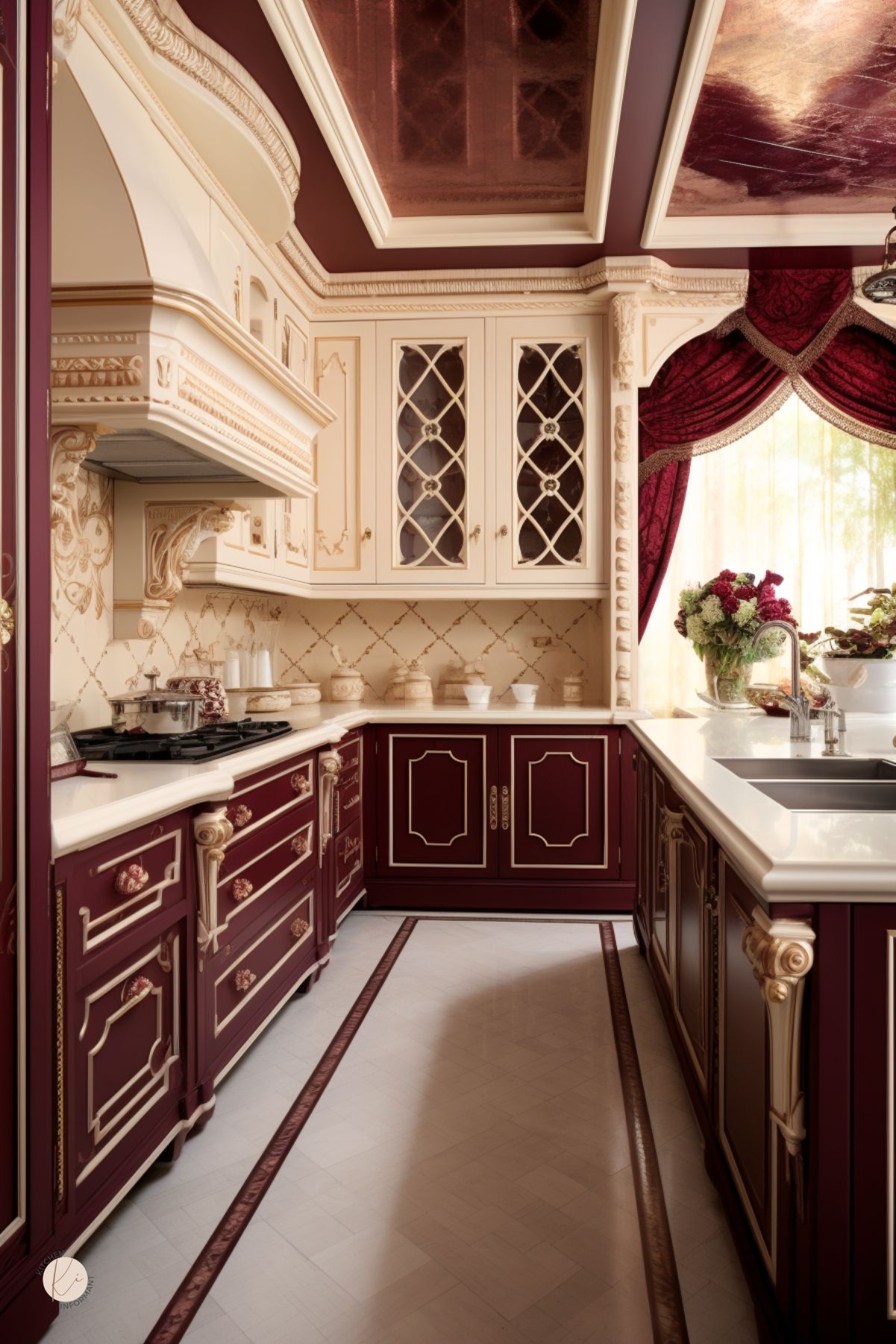
Accessorizing a burgundy and white kitchen can greatly enhance its classic look.
By carefully selecting wall art and textiles, homeowners can create a warm and inviting atmosphere that reflects their style.
Wall Art and Decorations
In a burgundy and white kitchen, wall art plays a key role in bringing the space to life.
Choosing colorful paintings or prints can add visual interest. Look for pieces that incorporate shades of burgundy or complementary colors like gold or cream.
Ideas for wall decorations:
- Framed Prints: Opt for classic art prints that evoke elegance.
- Shelving: Use open shelves to display decorative items, such as cookbooks or stylish jars.
- Mirrors: A decorative mirror can brighten the room and add depth.
Incorporating personal touches, like family photos in matching frames, makes the space feel more inviting and unique.
Textiles and Finishing Touches
Textiles add warmth and comfort to the kitchen. For a consistent look, choose fabrics that blend with the burgundy and white palette.
Consider these textile options:
- Curtains: Light, airy curtains in white can soften the space while allowing natural light to enter.
- Table Linens: A burgundy tablecloth or runner can create a focal point on the dining table.
- Cushions: Add cushions to dining chairs for comfort. Select patterns that complement the color scheme.
Finishing touches like stylish dish towels and potholders in coordinating colors can tie the entire room together, giving it a polished look.
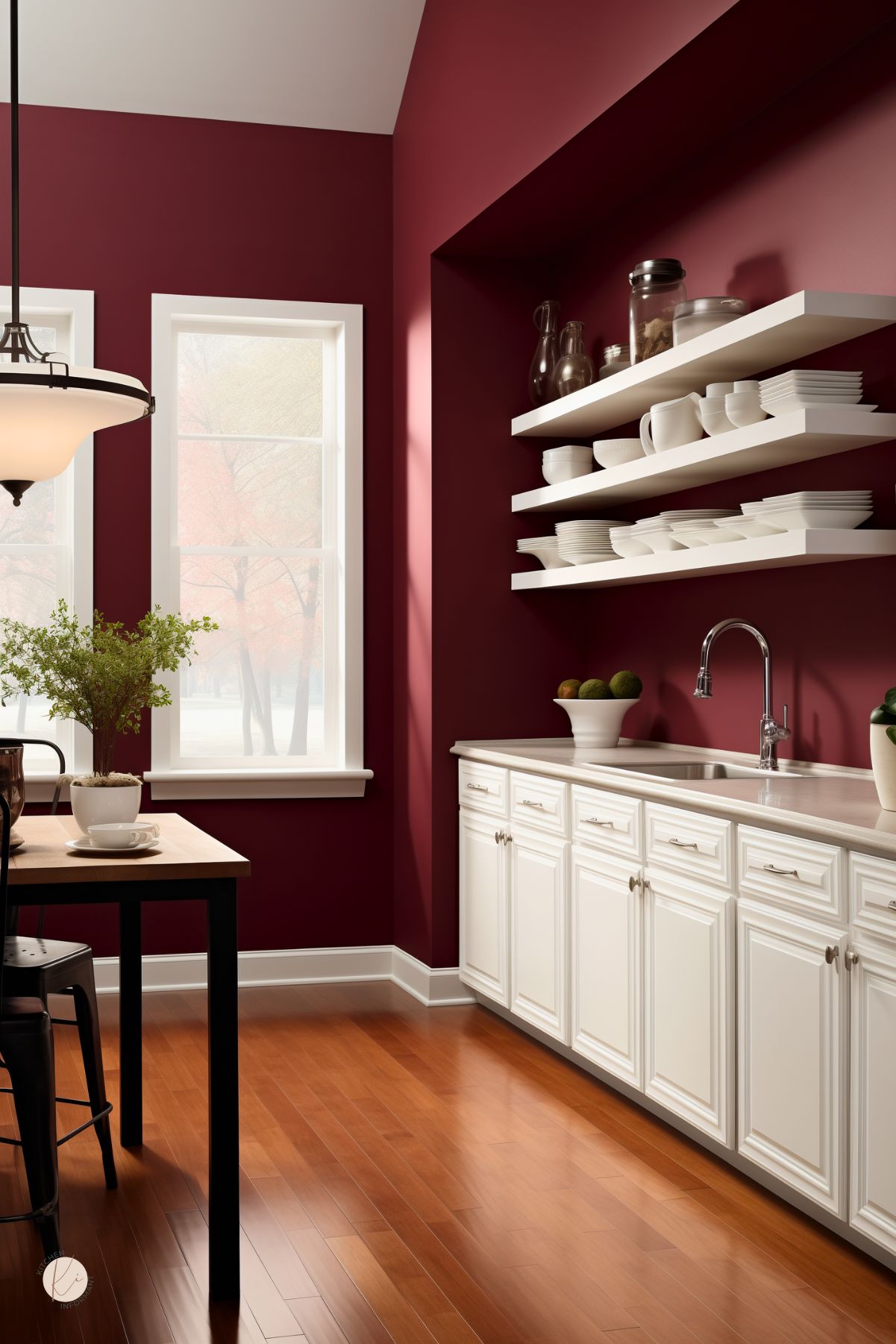
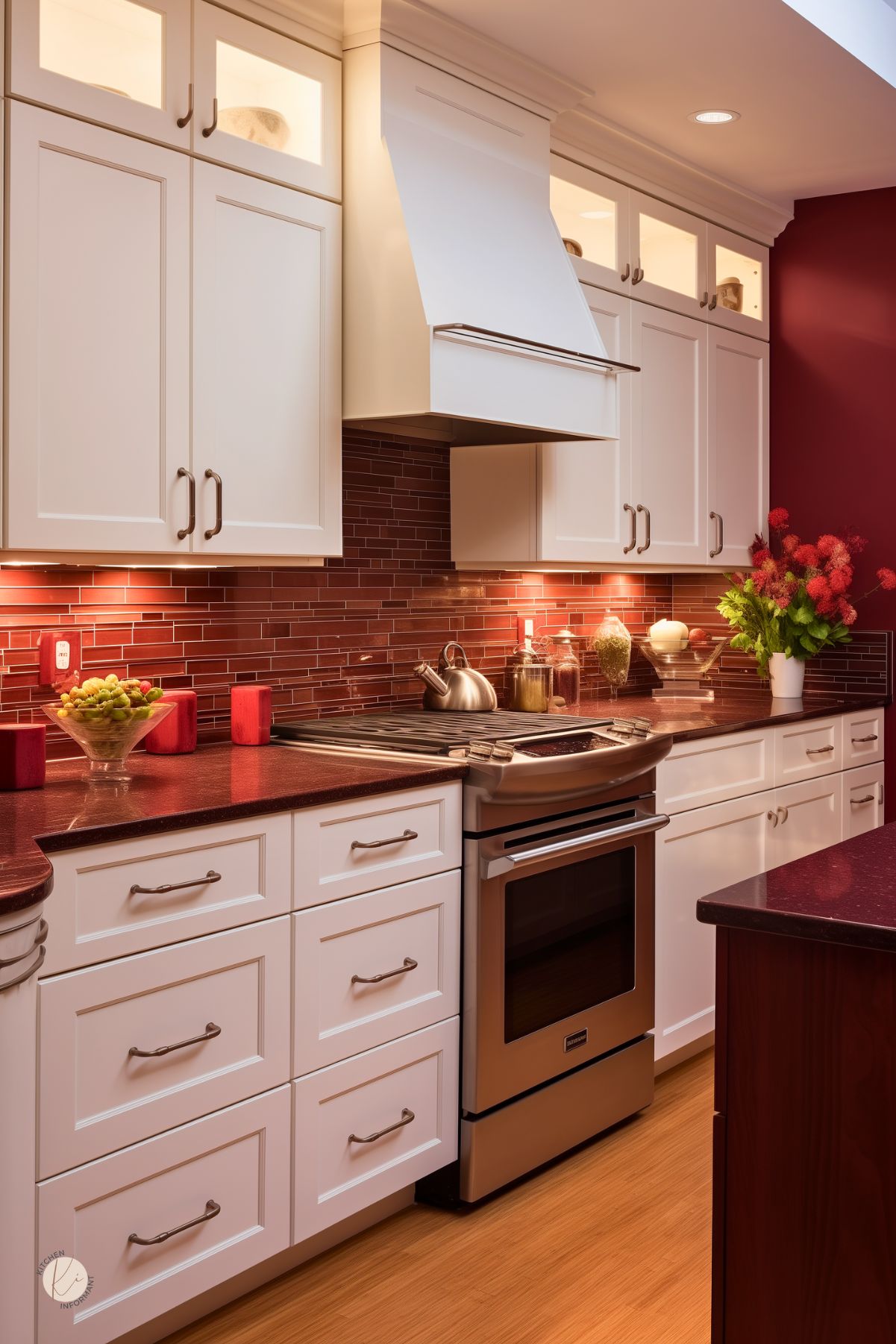
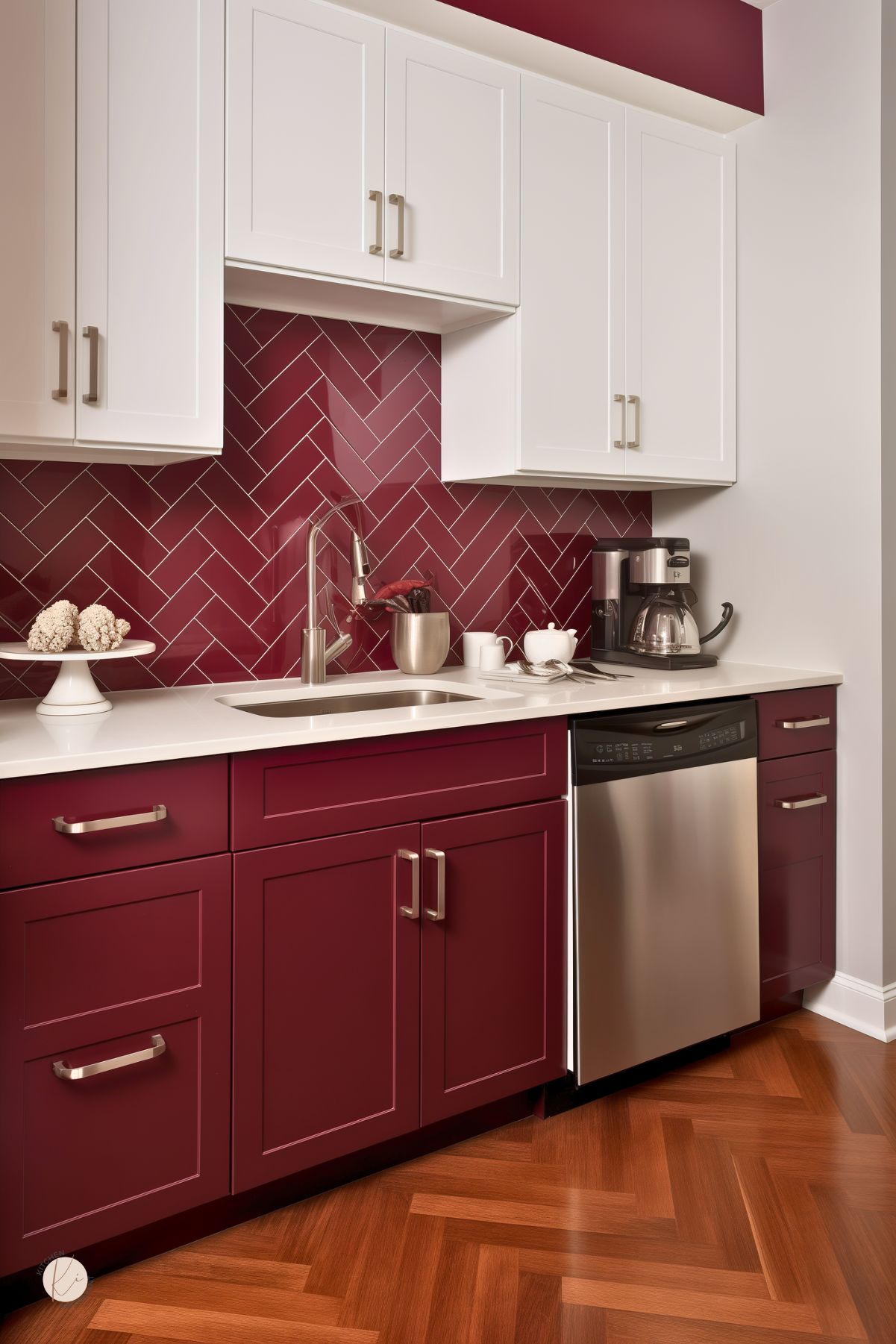
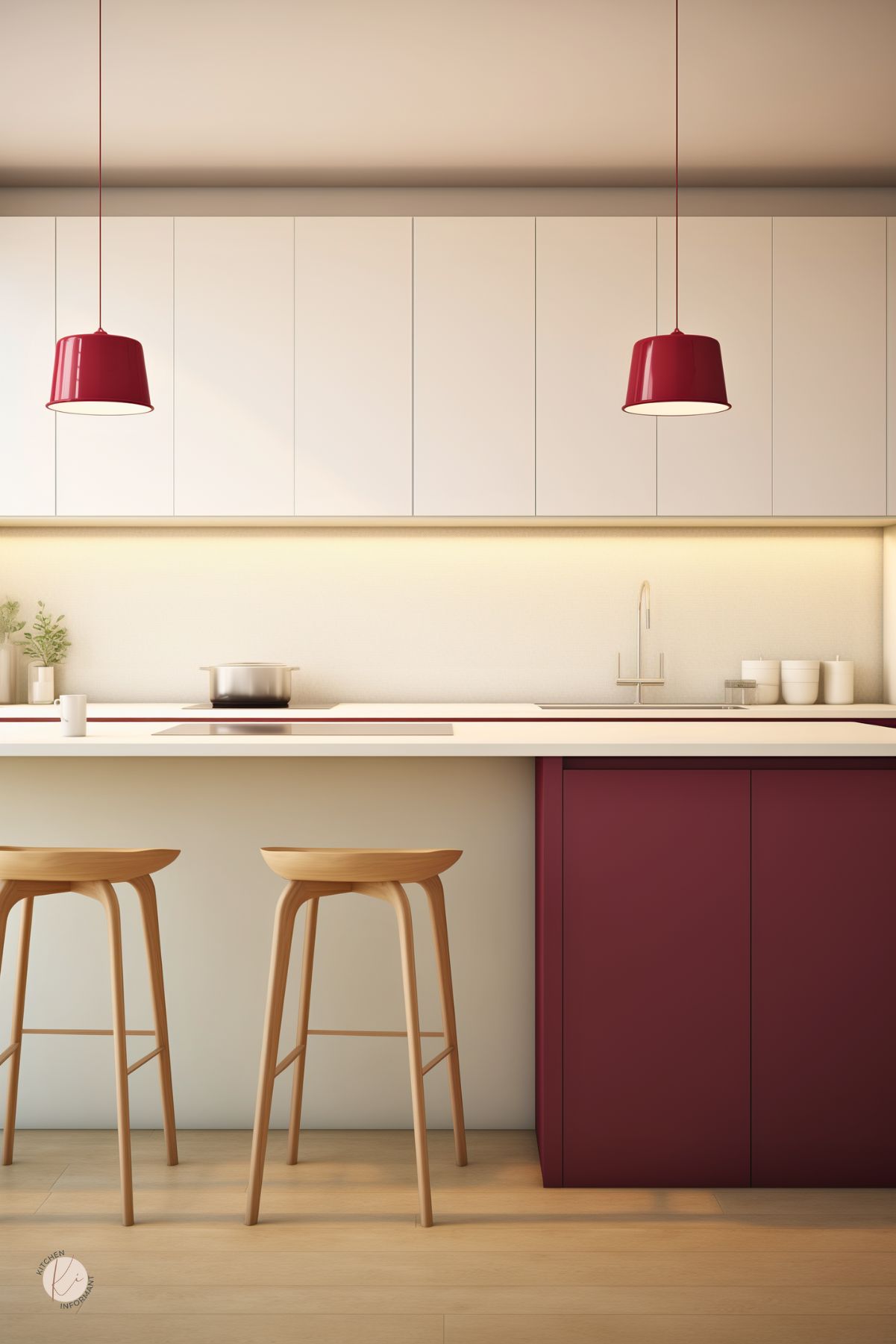
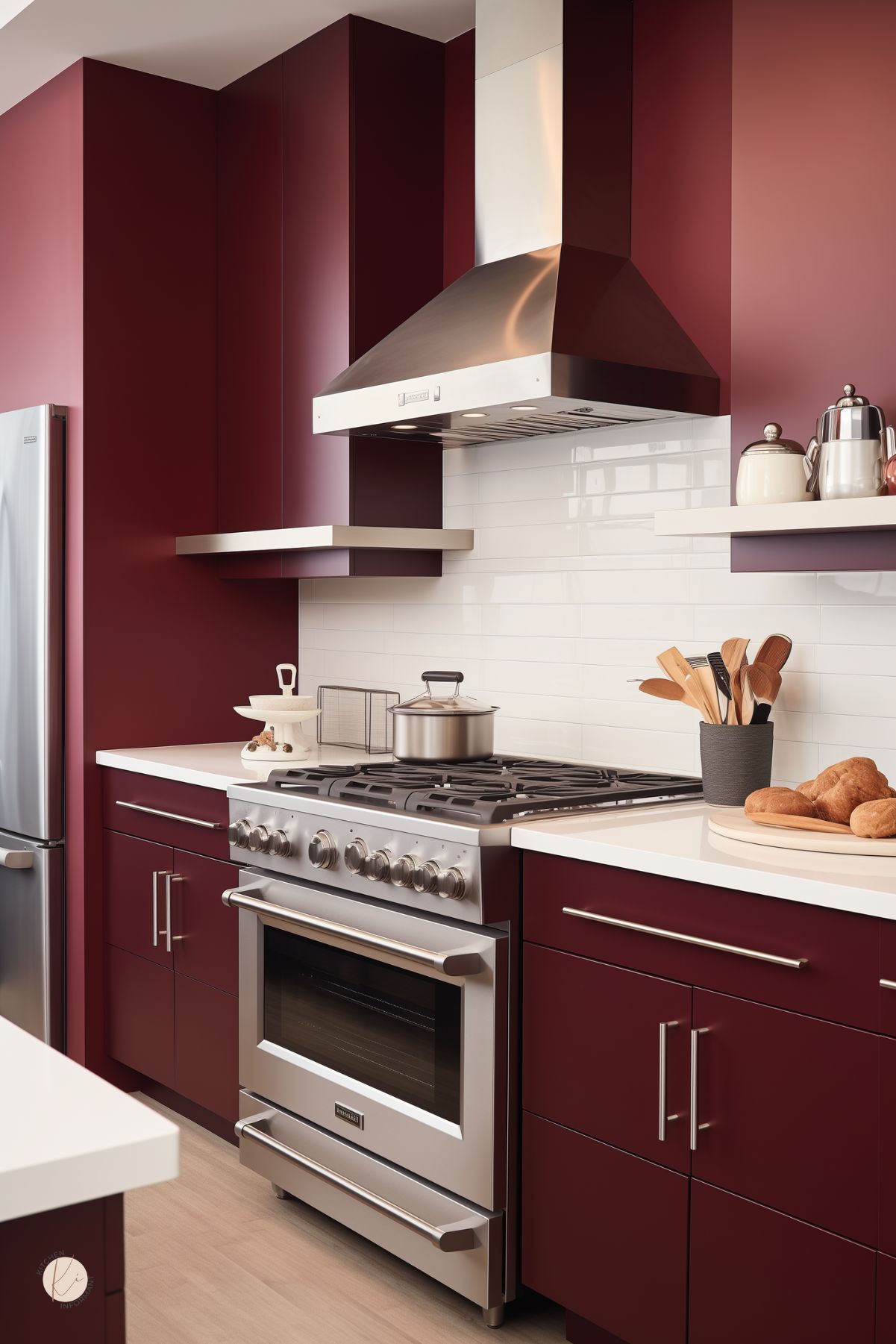
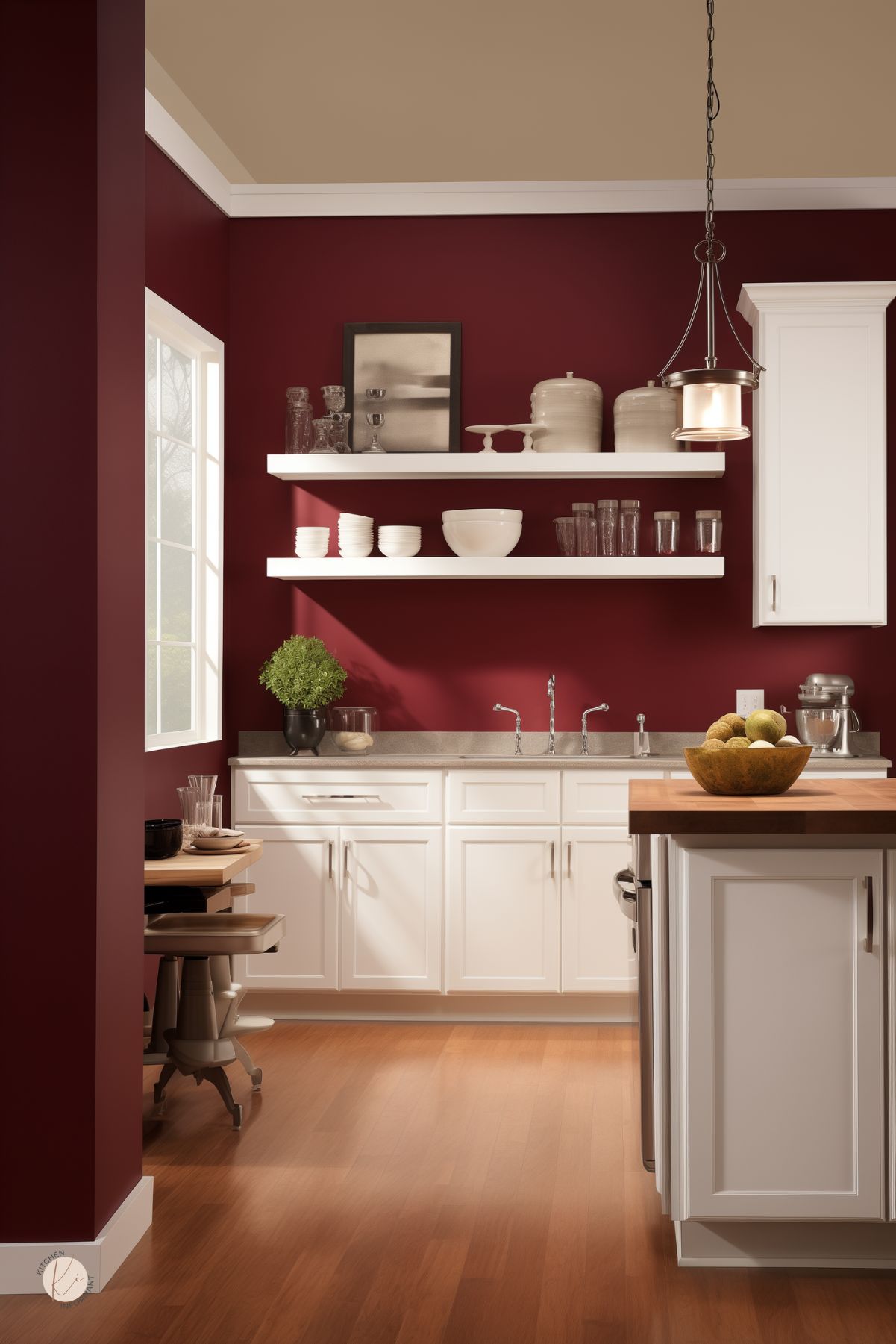
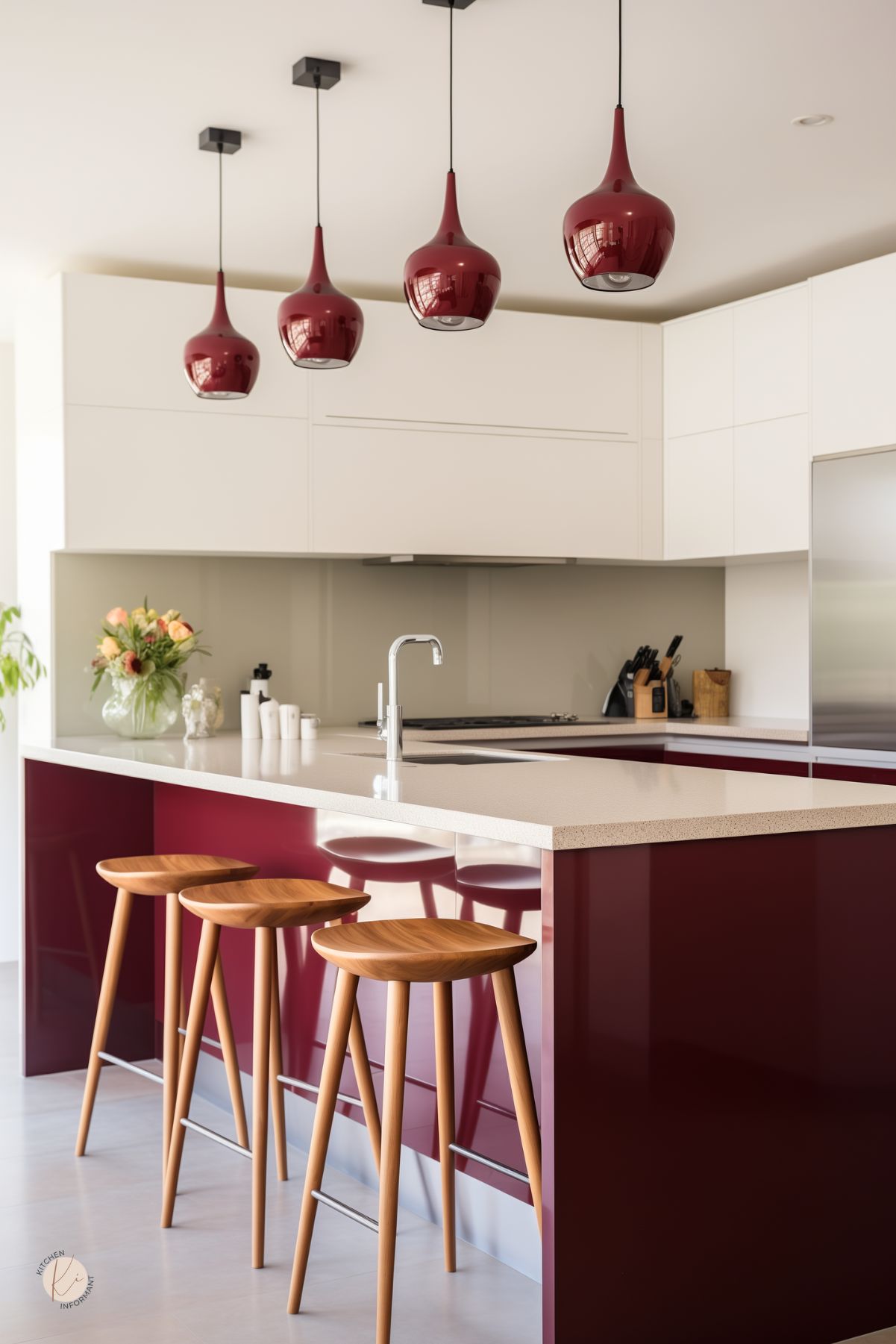

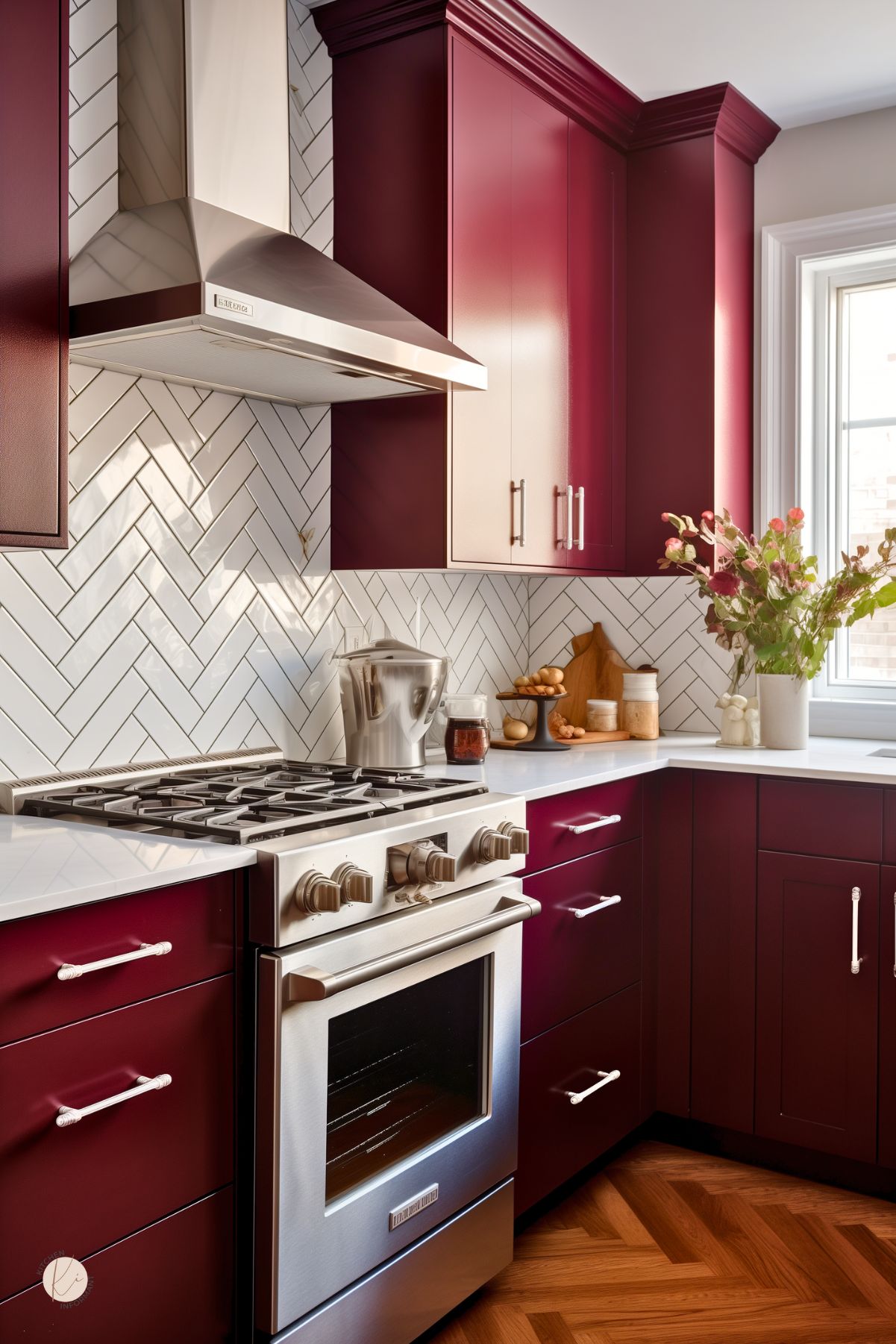
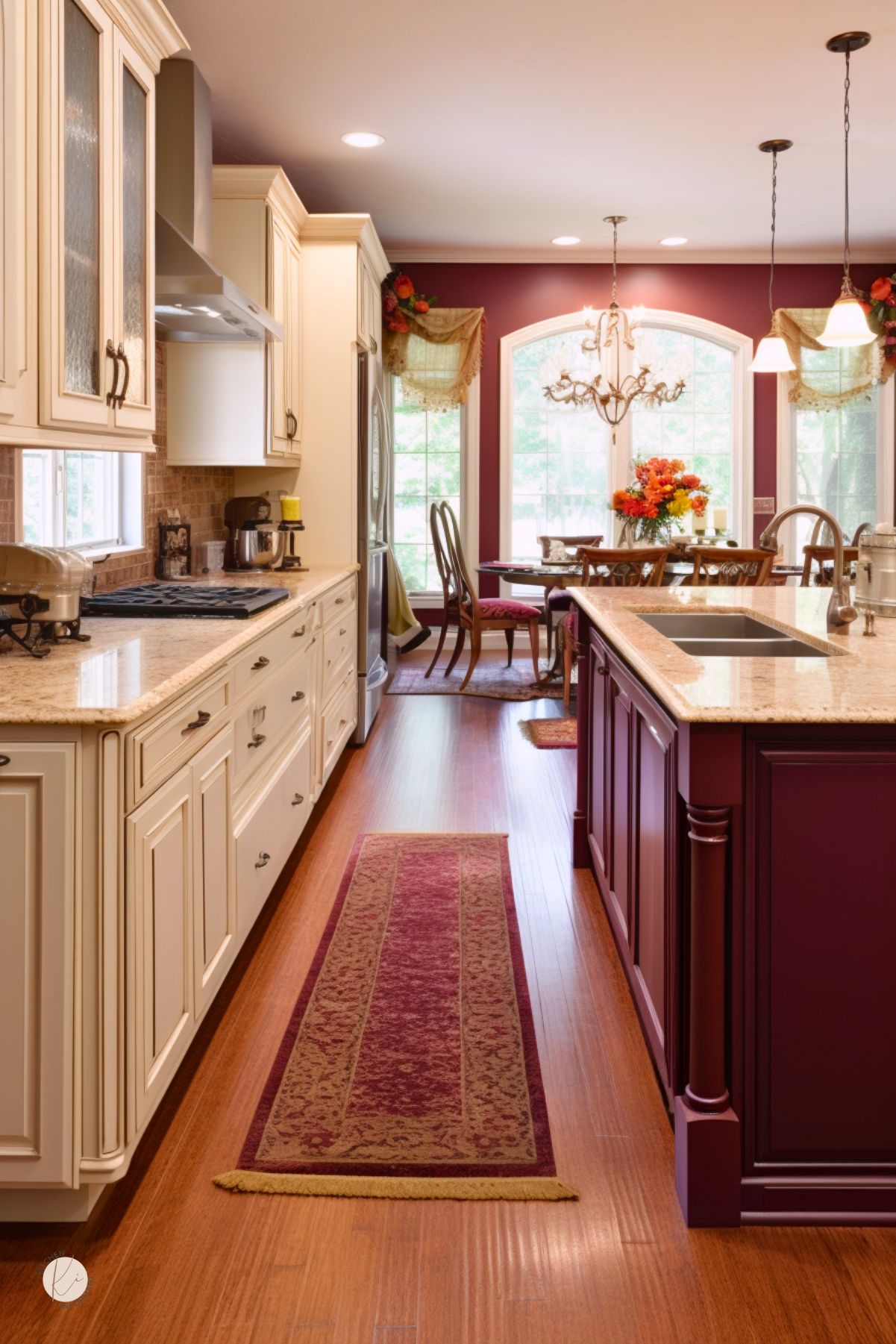
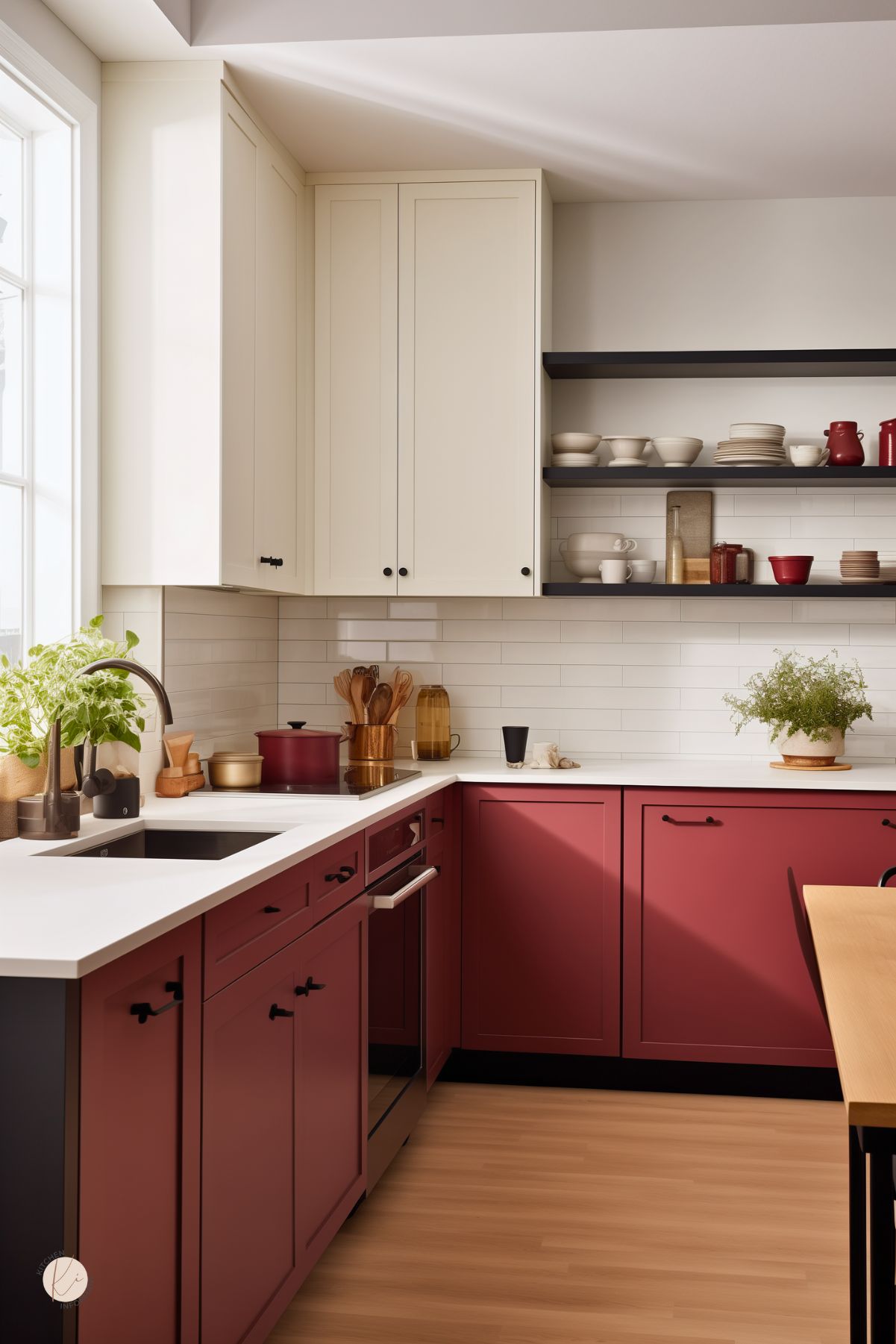
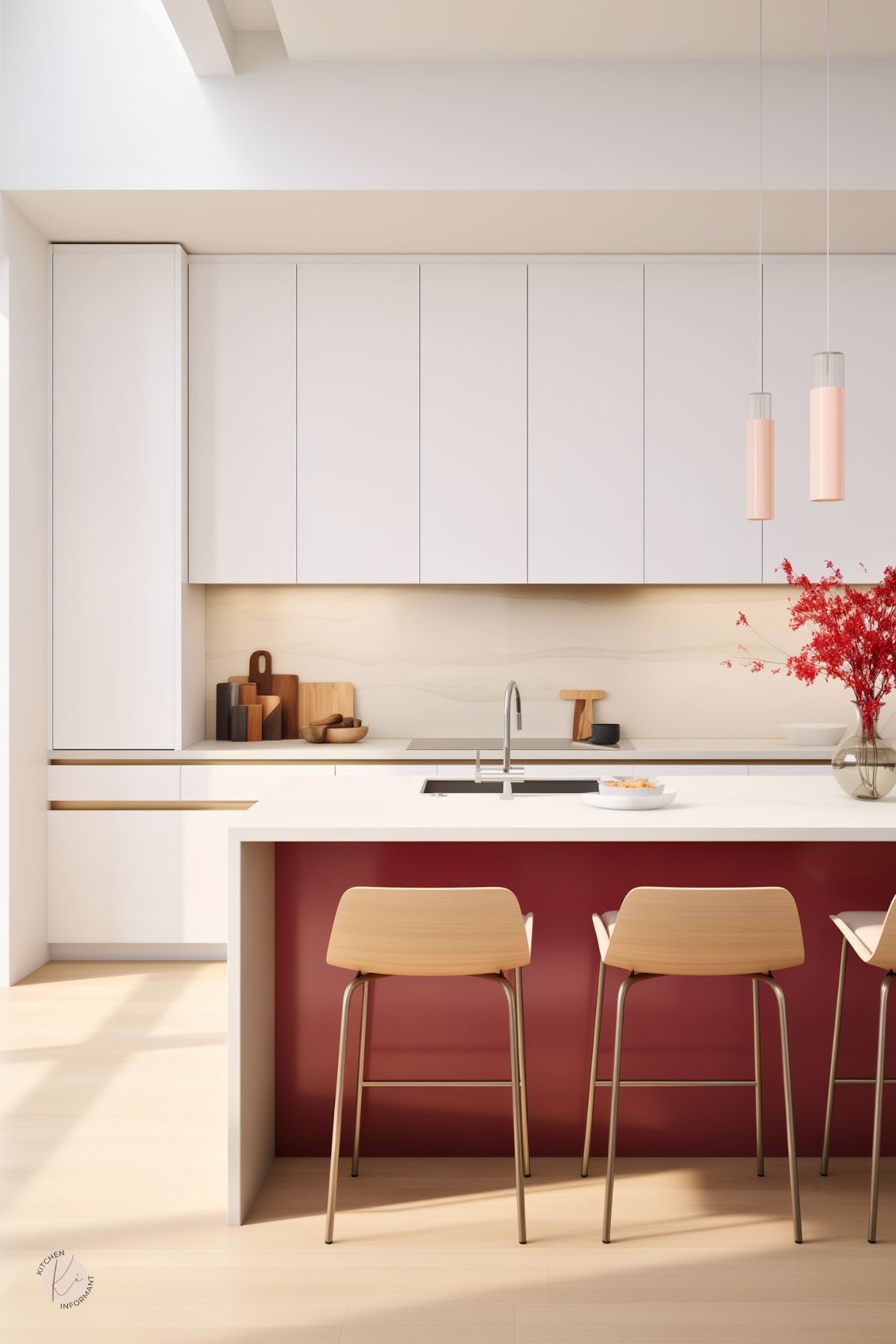

You May Also Like:
